Balsam Novogvineinsky is a relatively new species belonging to the genus Impatiens family Balsamino. This species was artificially bred by crossing balsam Hawker and other valuable plant species. Representatives of the New Guinean species immediately gained great popularity, which only grows over the years. Due to their high decorative value, hybrids confidently occupied their niche in indoor floriculture.
Balsam Novogvineinsky unpretentious, so care for the flower at home is easy. Moreover, he does not have a pronounced dormant period, like most decorative flowering crops. Accordingly, caring for a flower does not imply strict adherence to the “winter” - “summer” modes.
Content
Characteristics of the species and varietal variety of balsam
Representatives of the Novigvineysky species are distinguished by a strong stem, dense leaf blades, compact bush size (up to 30-50 cm) and the ability to bloom all year round.
The leaves are located on the stem whorled. They are attached using shortened petioles. The shape of the plates is wide-lanceolate with a finely serrated edge. The central vein is clearly visible on the leaves. In most varieties, it is recessed deep into the plate. The color of the leaves is represented by shades of green. In some hybrids, it is combined with burgundy red or yellow.
Decorative value are flowers. They are quite large, in some varieties reach 8 cm in diameter. The shape of the flower is five-petalled with an elongated curved spur. Flowers can be arranged singly or collected by axillary inflorescences.
There are 3 groups of hybrids of this type:
- dwarf bushes up to 20 cm tall with small flowers;
- sprawling medium-sized shrubs designed for ampel growing;
- high hybrids with erect stems reaching up to 90 cm.
The most popular are the following varieties:
- Harmony - very branched stems and large flowers of 14 colors.
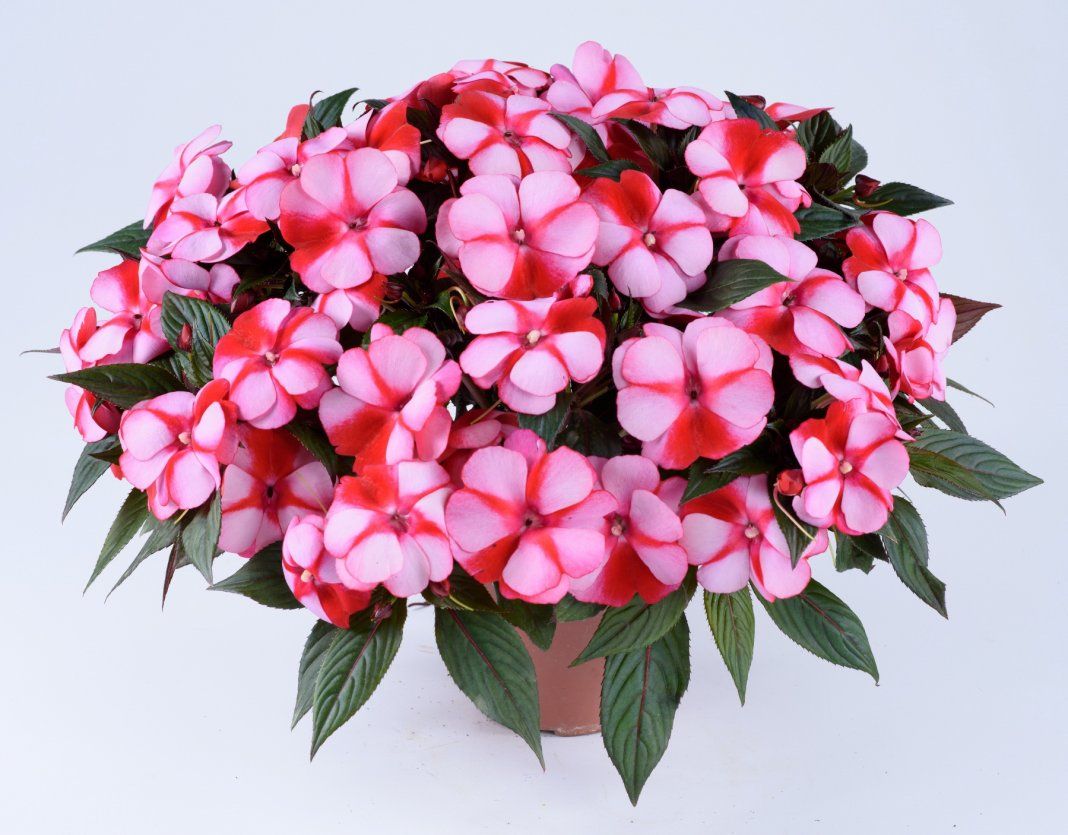
Harmony - Divaro - compact bushes with medium-sized flowers. The series has 6 colors.
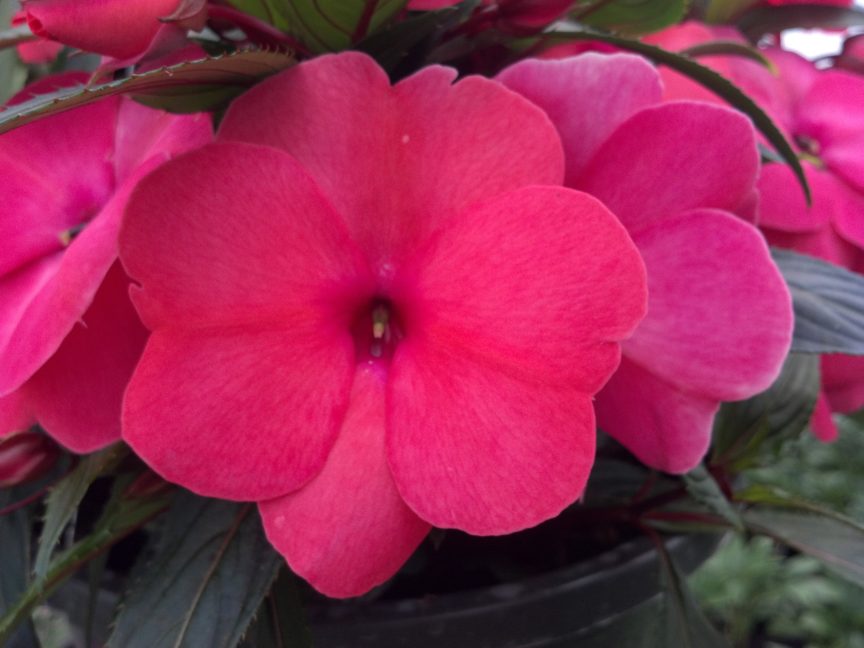
Divaro - SunPatiens Spreading White - variegated compact bushes with snow-white flowers.
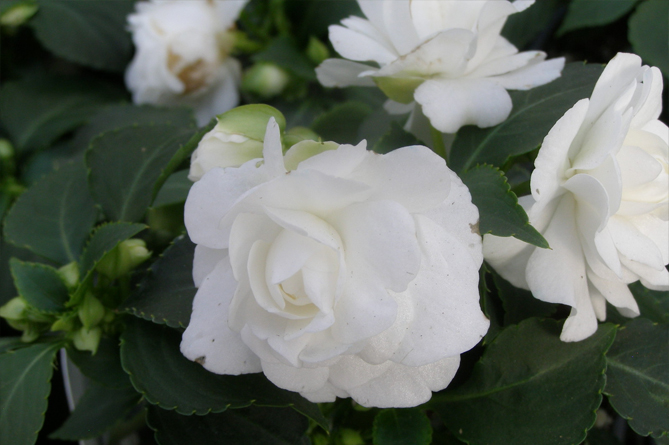
SunPatiens Spreading White - Jungle Rain - the series is distinguished by pastel tones of the color of the petals.
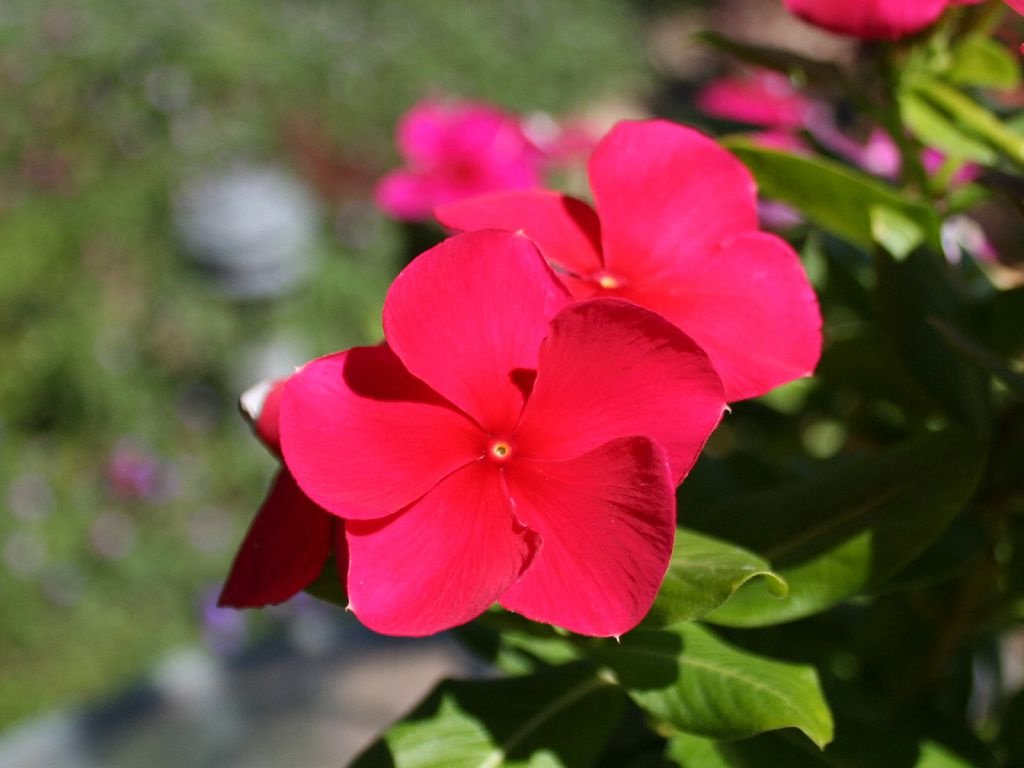
Jungle rain - Rainforest Exotic - two-color hybrids.
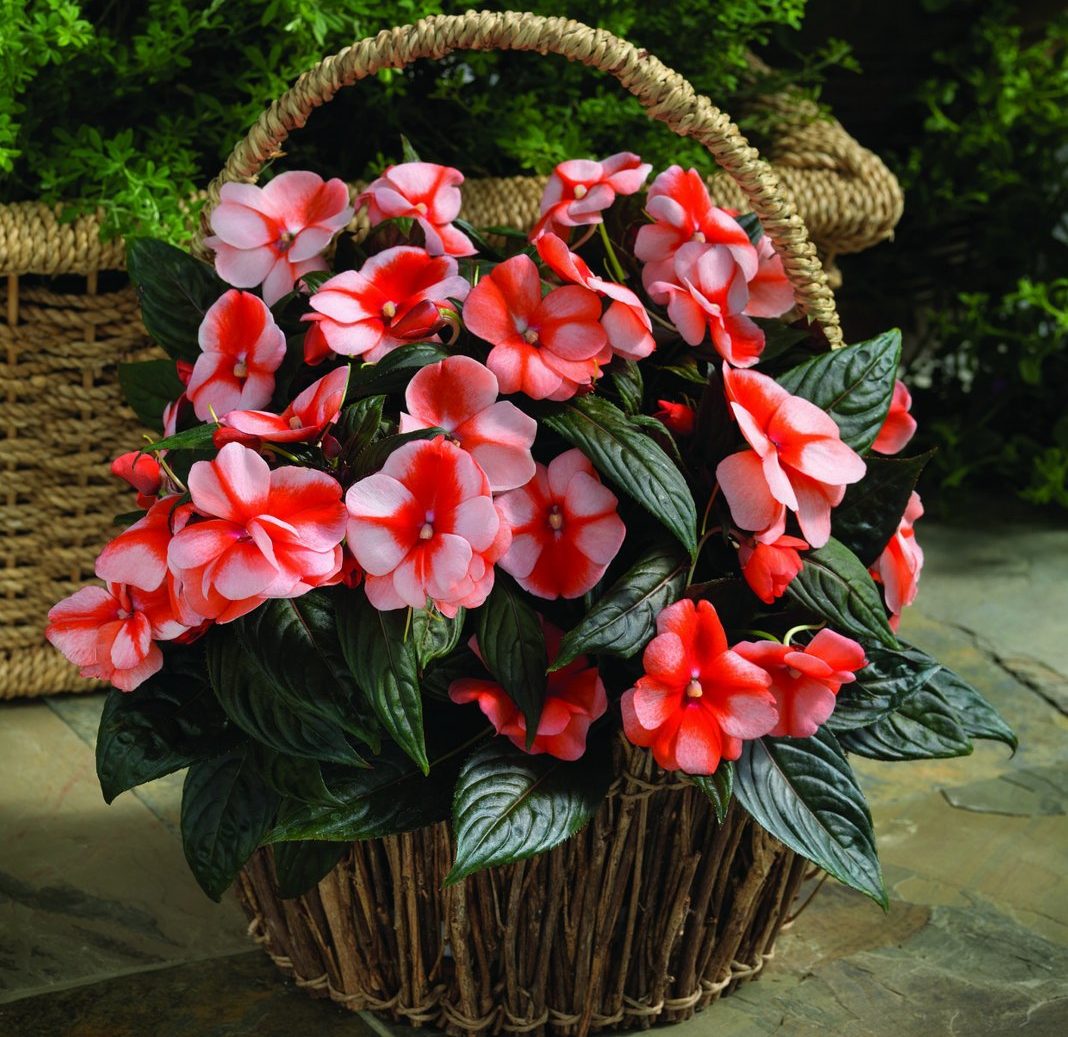
Rainforest exotic - Macarena - bright orange flowers on a background of bronze leaves.
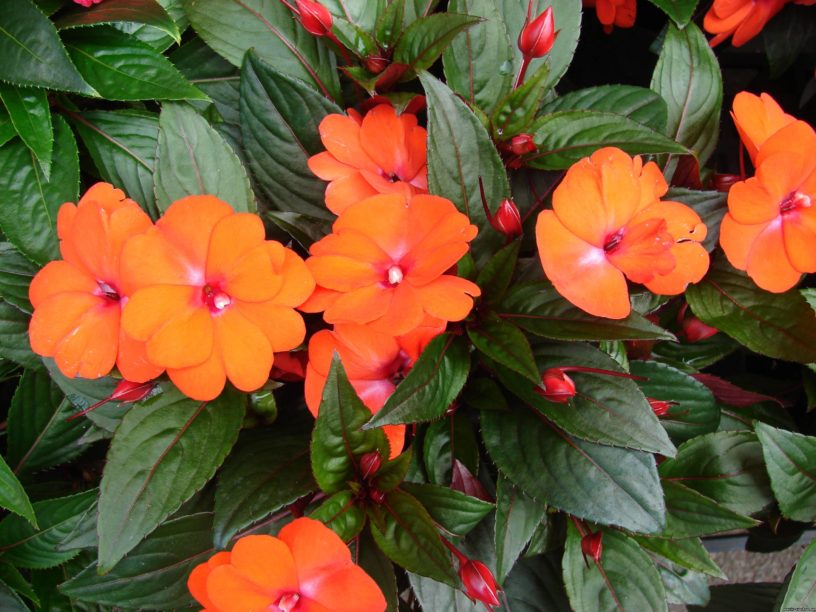
Macarena
The duration of flowering of balsam depends on the care. Subject to all norms, the plant can bloom year-round.
Caring for New Guinean Balsam at Home
Growing balsam at home will not be a hassle. Often difficulties arise in inexperienced gardeners who do not know or neglect the recommendations of specialists.
Can I keep balsam at home?
The content of balsam at home is associated with several popular signs and superstitions. The most common of them says that Vanka Wet in the house - to her husband's drunkenness. Perhaps this sign has arisen due to the ability of the plant to release drops of juice on the stems.
Other folk wisdom contradicts the previous statement. According to her, you can keep a flower at home, and growing a flower brings masculine happiness to the owner of the house. He is doing well financially, building good relationships with his family.
Another sign identifies balsam with a source of home comfort. A house in which there is a flower will become much more comfortable, more hospitable. The plant emits positive energy aimed at harmonizing family relationships. If the household begins to quarrel, balsam will wither away. As soon as mutual understanding reigns in the family, the plant will grow.
Lighting
Balsam is considered a photophilous plant. It is recommended to place it on the windowsills of the western or eastern direction. It is there that the flower receives enough bright diffused light.
The location on the south side may cause problems. Under the influence of direct rays of the midday sun, the flower can get burns.
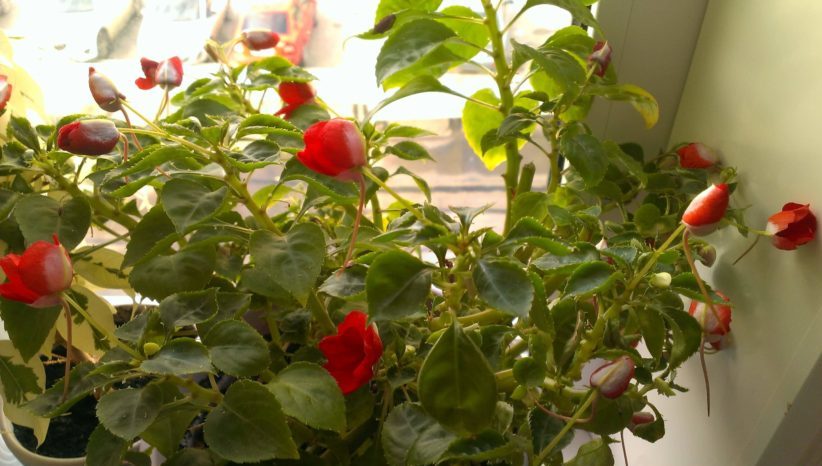
The north side is not suitable for growing balsam. To provide him with the proper amount of light, you will have to direct the phytolamps to the flower. Without them, the plant will stretch, losing its decorative effect.
Temperature and humidity
Balsam is quite thermophilic. He is comfortable in the temperature range from 18 ° C to 24 ° C. Some gardeners advise taking the pot out onto the street. Fresh air is really useful for the plant, but before taking it to the garden plot, you should take into account weather conditions.
Since the flower does not tolerate sharp jumps in temperature, it can be tolerated only when the difference between day and night temperatures does not exceed 5 ° C.
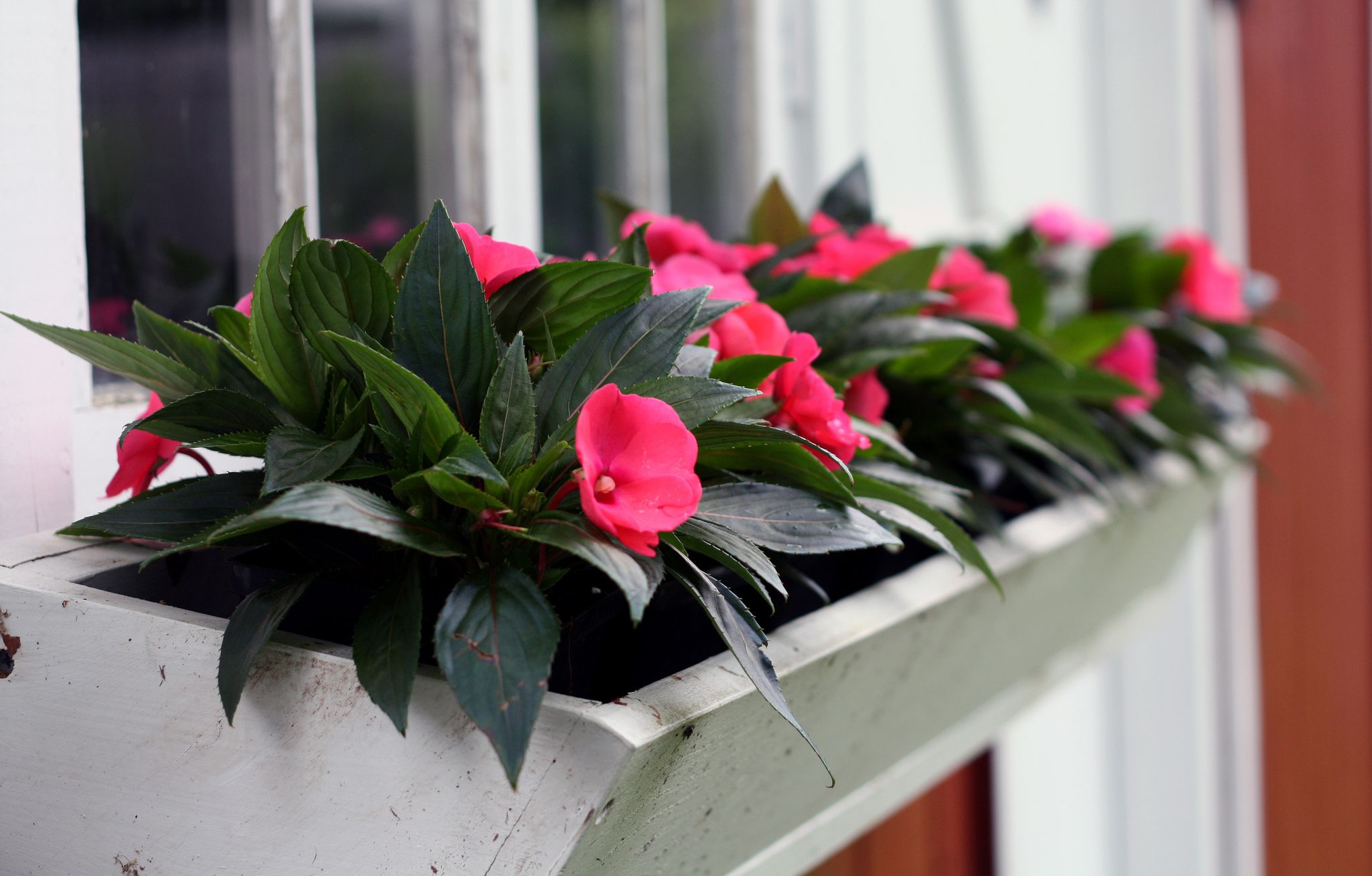
The optimal humidity level for growing balsam is considered to be 40-60%. This is a low level, typical for a living room. To increase humidity is necessary only during the heat and operation of heating appliances. In summer, the flower is sprayed with soft water. And in winter it can be placed on a tray with wet pebbles.
Watering and feeding
It is recommended to water the flower through a tray. In summer, the soil is moistened daily; in winter, watering is reduced to 1 time per week. Excess water must be drained. Stagnant moisture in the pan provokes the development of rot.
For irrigation use soft water at room temperature. It is advisable to use rainwater. If this is not possible, household water should be pre-filtered.
The root system of balsam is very susceptible, so experts advise halving the dosage recommended by the instruction. When choosing fertilizer, special attention should be paid to the composition. Complexes with a high concentration of potassium and a low nitrogen content are suitable for the plant.
Why balsam leaves leaves and dries
The reason why the flower dips the leaves and dries may be improper care or defeat diseases and pests. It should be noted that all diseases of balsam, including infection with pests, are also the result of improper care.
If balsam has lowered the leaves, the following care points should be analyzed:
- Temperature and humidity. The room may be too hot or too dry.
- Lighting. Leaves may fall due to lack of light.
- FertilizersImproperly organized feeding can seriously harm the plant.
- Pot. Balsam is comfortable only in a cramped space.
If all of the above reasons are excluded, most likely, the flower was seriously ill or became a victim of pests.
Disease and treatment
Most often, balsam is affected by rot:
| A kind of rot | Symptoms | Treatment methods |
|---|---|---|
| Root | Drying leaves and buds, stunting | Treatment is effective only in the early stages of the disease. Affected parts of the plant are cut and destroyed. The flower is treated with fungicide. The pot and used tools are sanitized. Soil replaced with fresh |
| Stem | Withering of flowers and the appearance of brown spots on the leaves. Over time, a gray edge appears on the spots | |
| Gray | Rotting stalk and petioles | |
| Black | Blackening and mucous plaque on the basal part of the stem, growth arrest |
All types of rot are caused by fungal infections and are very dangerous for the plant. Balsamins with advanced stages of development of rot die.
Pests and control methods
The most common pests of balsam are the following insects:
- Whitefly Small whitish insects on the back of the leaf are clearly visible on a green background.
- Thrips. Small oblong insects can be seen on the inside of the leaf. Small holes and stains appear on the front side.
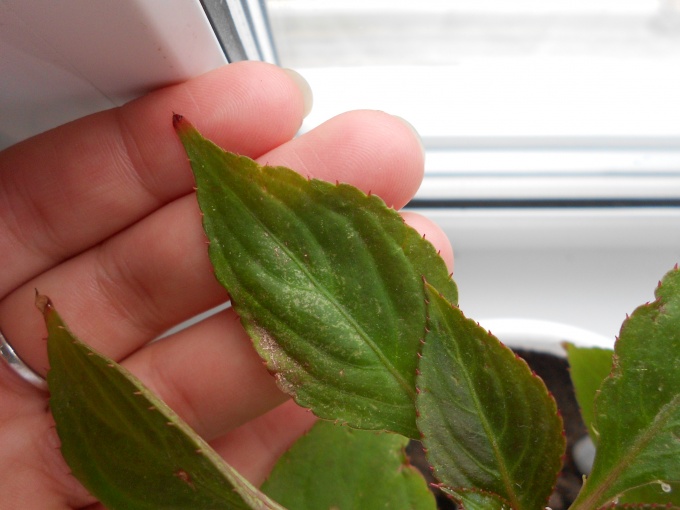
Pests and diseases of balsam - Aphid. It usually attacks large colonies. Stems and inflorescences literally teem with transparent insects.
- Spider mite. It is very difficult to notice an insect with the naked eye. The tick is determined by the presence of a thin cobweb on the wrong side of the leaf and petioles.
The plant is released from pests with the help of insecticides.
Propagation and transplantation of New Guinean balsam at home
The plant is propagated in two ways: vegetative (by cuttings) and generative (by seeds). Most gardeners prefer a vegetative propagation method.
Cuttings
The best time for grafting is considered March. At this time, a new round of vegetation begins. March cuttings will bloom this year. Unlike the seed path, propagation by cuttings allows you to save varietal characters of the mother plant, which is important for the propagation of rare hybrids. Propagation of balsam by cuttings consists of several stages:
- An apical shoot with three internodes is cut off from an adult plant. Lower leaves are removed. On the shoot, intended for the stalk, there should be no buds or inflorescences.
- The stalk is rooted in a container with water or with a moist mixture of peat (1/4), vermiculite (1/4) and perlite (1/2). Water is periodically replaced with fresh.
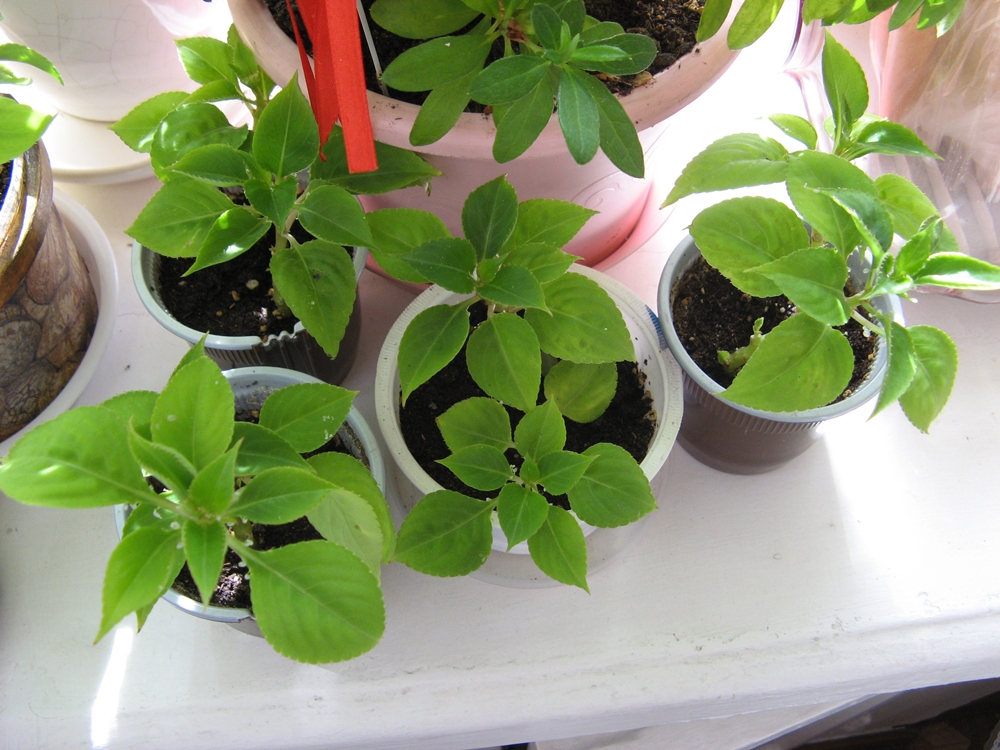
Propagation by cuttings - Cuttings are left in a warm room with bright diffused light.
- To accelerate the rooting process, the container is covered with a film or a transparent cap.
- The cuttings placed under a film need daily ventilation. Layers that are rooted in the soil must be sprayed additionally on a daily basis.
Balsam takes root in water for 10-14 days, in soil - after a week. After rooting, the film is removed and the cuttings are left to harden for 2-3 weeks. Then they are planted as adult plants.
Seeds
The advantage of seed propagation is a large number of new specimens. But this method also has disadvantages. First, seeds do not retain varietal characteristics. Secondly, they do not have very good germination.
Derive a plant from seeds as follows:
- Balsam seeds are pre-soaked in warm water.
- After a couple of hours after soaking, the seeds are mixed with sand and placed in a container with wet peat.
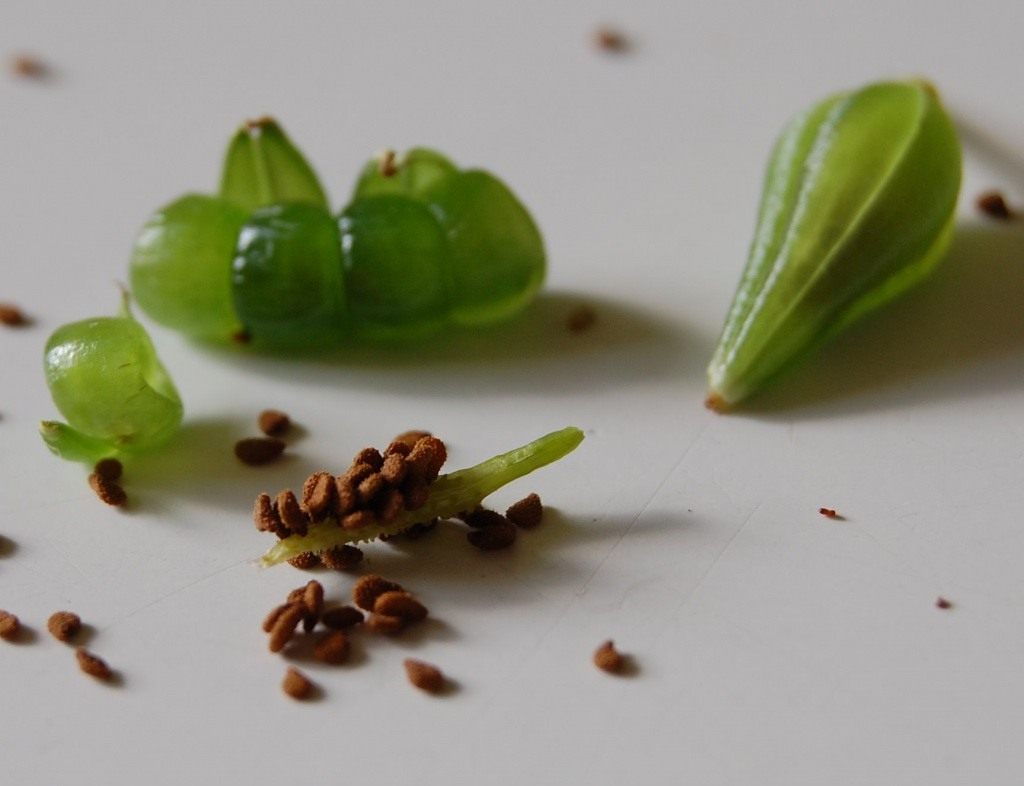
Balsam seeds - The container is covered with a film and left in a warm, bright place.
- Seedlings require daily ventilation and hydration. Instead of watering, the soil is sprayed from the sprayer so as not to wash the seeds.
- Shoots appear 2-3 weeks after sowing.As soon as this happens, the film is peeled off.
When the sprouts reach 5 cm, they are transplanted into the usual balsamic soil.
Transplant and landing
The flower has a very developed root system, so the transplant is carried out every year. It is advisable to carry out the procedure in the spring, before the period of budding and flowering. A flower transplant provides the following steps:
- The plant is carefully removed from the old pot and freed from the old soil.
- Roots carefully inspect for rot. If it is, the affected areas are cut off and treated with a fungicide solution.

Transfer - A quarter of the new pot is filled with drainage (expanded clay, pebbles, broken brick).
- A little soil is poured onto the drainage layer. Place a flower on top and spread its roots.
- The void of the pot is filled with the remaining soil. The soil is slightly crushed and moistened.
The first planting is no different from a flower transplant procedure. For young plants, pots with a diameter of not more than 10 cm are selected. The plant is comfortable in nutritious and loose soil. Most often, balsams are planted in universal soil with the addition of vermiculite.
Common Growing Questions
New Guinean hybrids are very popular among gardeners. This excitement is due to the great attractiveness of plants and their unpretentiousness.

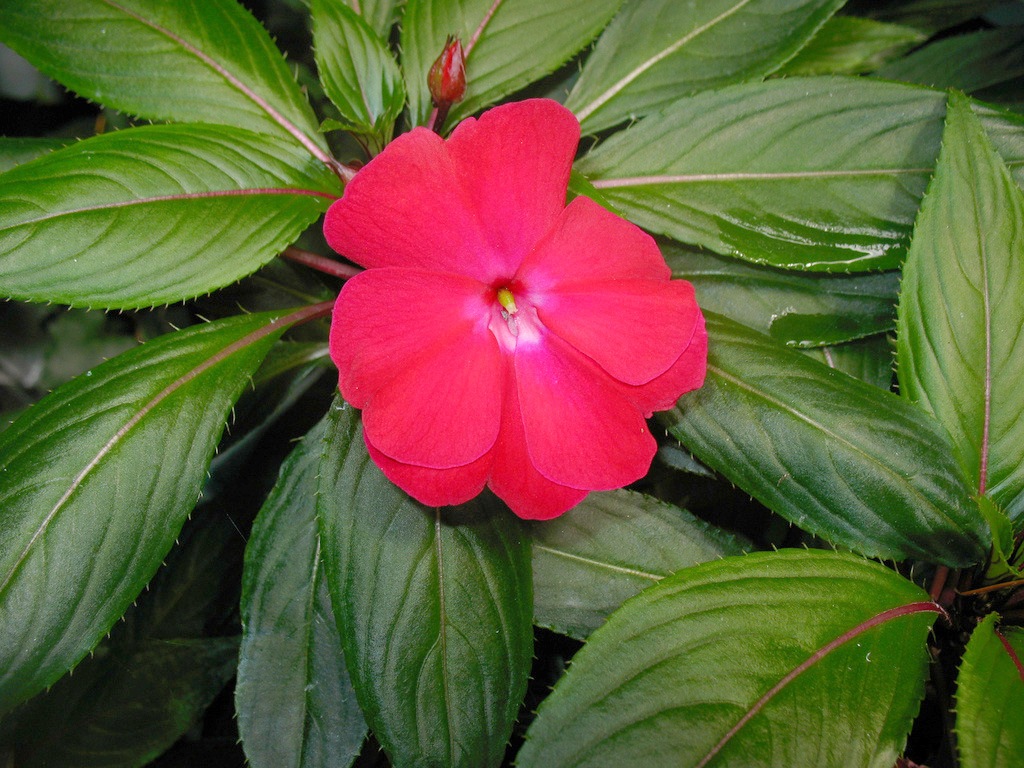
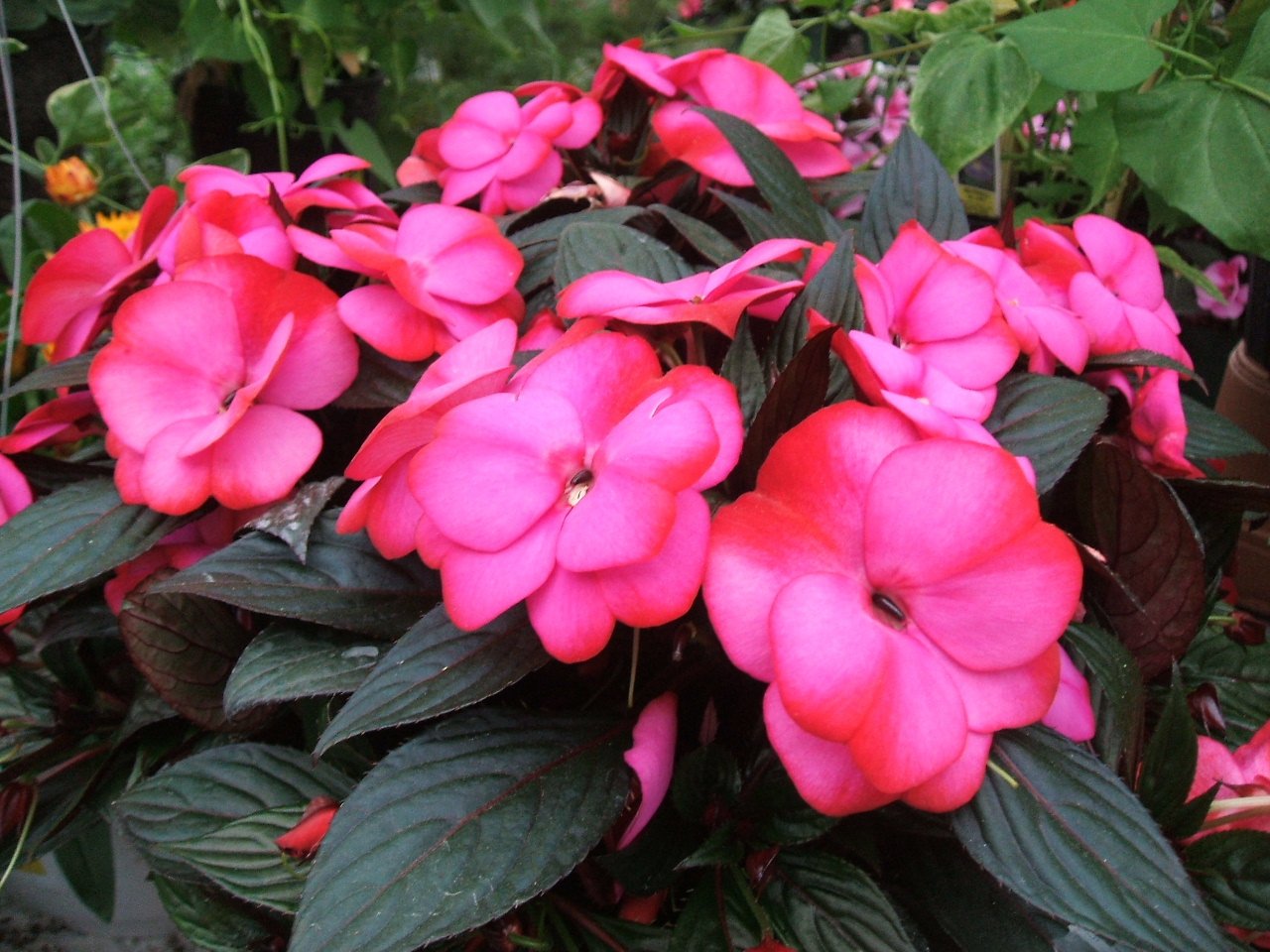
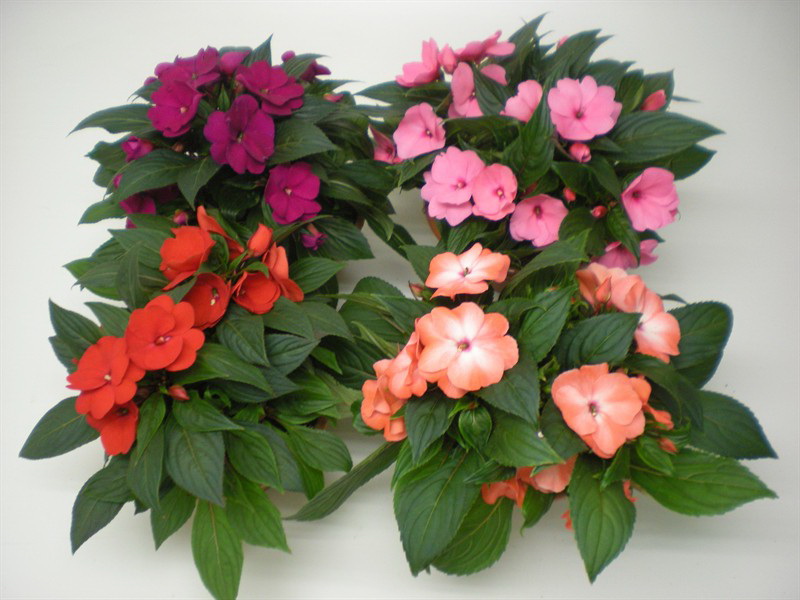
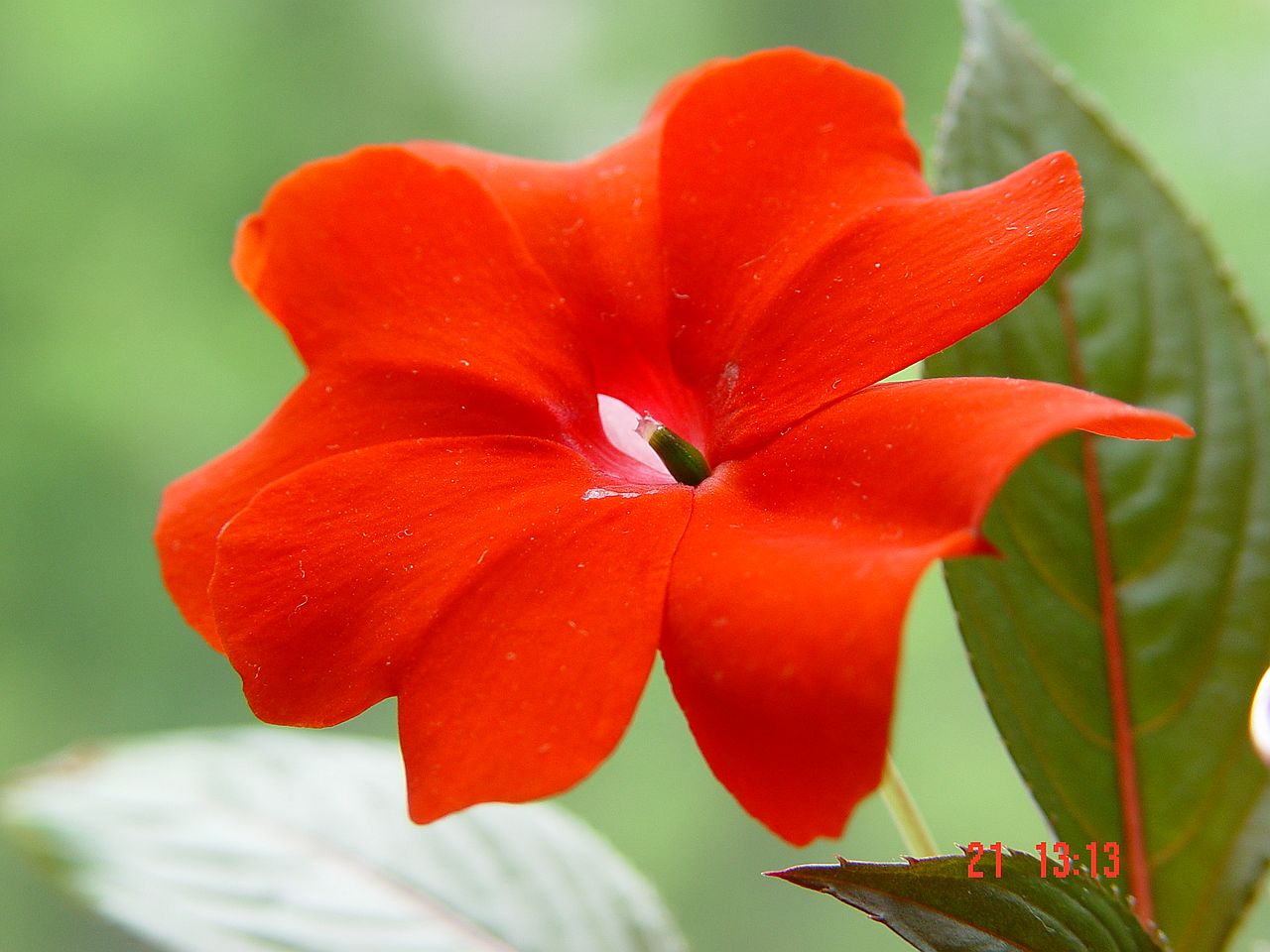
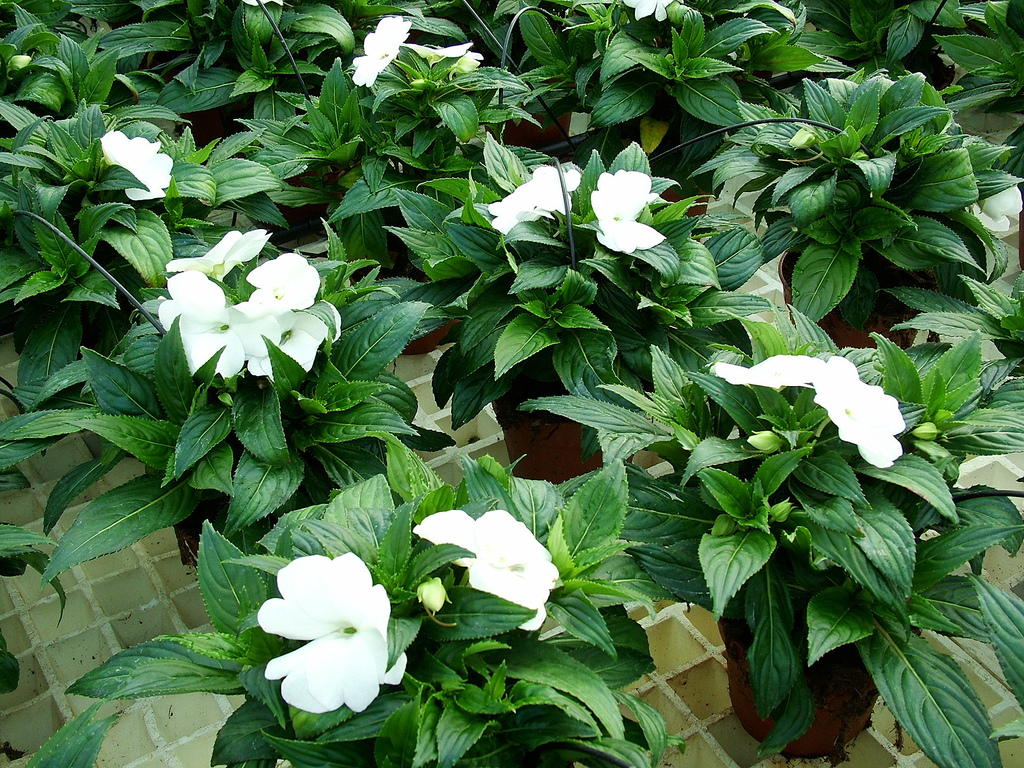
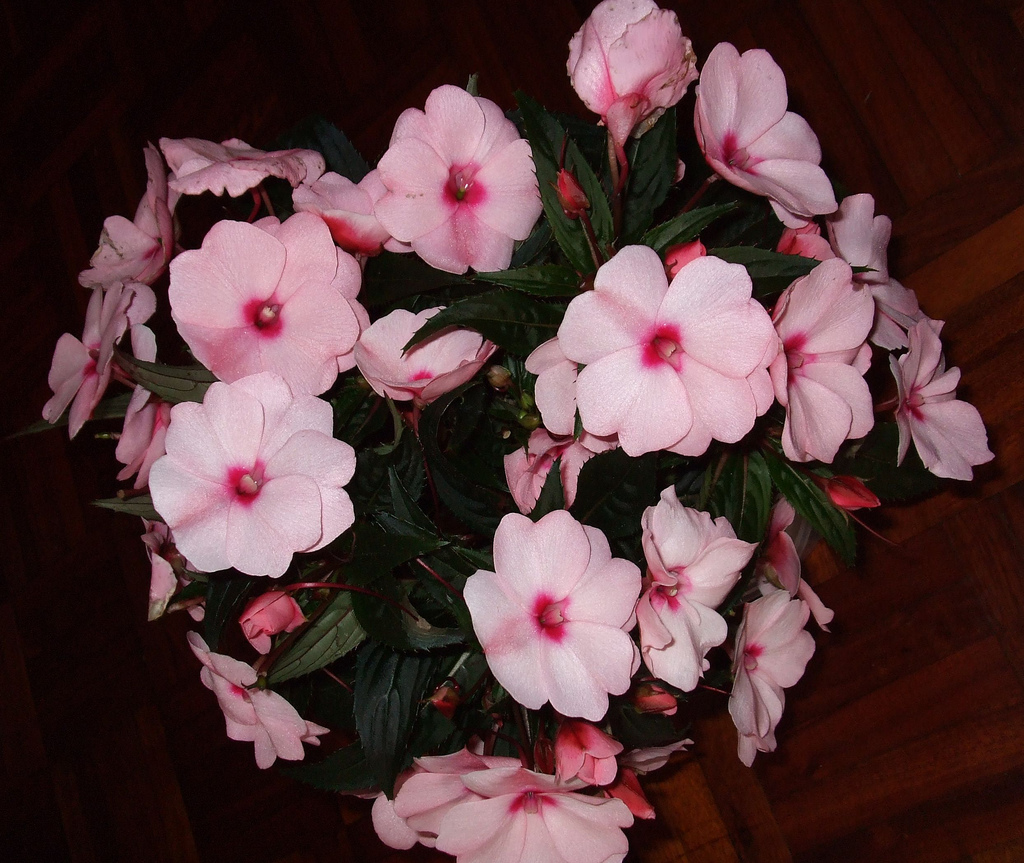



 Sow in the ground, without seedlings: 10 beautiful and unpretentious flowers
Sow in the ground, without seedlings: 10 beautiful and unpretentious flowers Platicodon planting and outdoor care
Platicodon planting and outdoor care Hosta - planting and care in the open ground in the Urals
Hosta - planting and care in the open ground in the Urals Oleander - care and growing at home
Oleander - care and growing at home